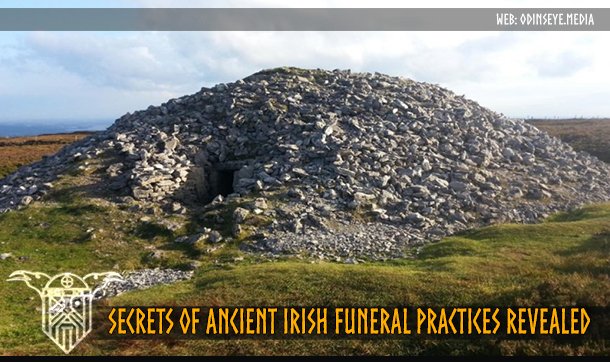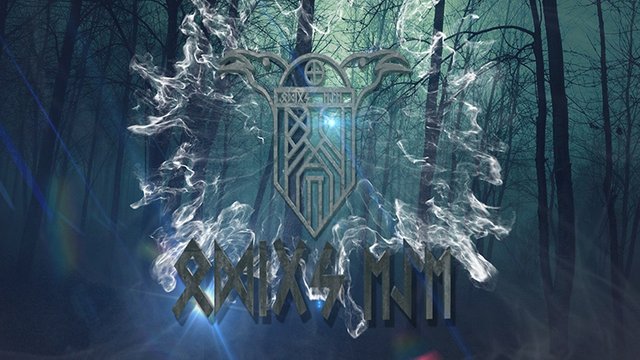
New insights into the lifeways -- and death rites -- of the ancient people of Ireland are being provided through funerary studies led by a researcher at the Department of Anatomy at New Zealand's University of Otago.
The findings, which have been published in the journal Bioarchaeology International, are part of a project applying modern techniques and research questions to human remains that were originally excavated more than 100 years ago.
The new paper, whose lead author is Dr Jonny Geber, focuses on the 5000 years-old Passage Tomb Complex at Carrowkeel in County Sligo in the north-west of Ireland. This site is one of the most impressive Neolithic ritual landscapes in Europe, but despite that, is relatively unknown.
The research team analysed bones from up to seven passage tombs that included both unburnt and cremated human remains from around 40 individuals. Much remains unknown about these Stone Age people.
Dr Geber says he and his colleagues determined that the unburnt bone displayed evidence of dismemberment.
Also read: Ireland's Vikings still haven't unveiled all of their secrets
"We found indications of cut marks caused by stone tools at the site of tendon and ligament attachments around the major joints, such as the shoulder, elbow, hip and ankle," he says.
Dr Geber says the new evidence suggest that a complex burial rite was undertaken at Carrowkeel, that involved a funerary rite that placed a particular focus on the "deconstruction" of the body.
"This appears to entail the bodies of the dead being 'processed' by their kin and community in various ways, including cremation and dismemberment. It was probably done with the goal to help the souls of the dead to reach the next stages of their existence."
This study has been able to show that the Carrowkeel complex was most likely a highly significant place in Neolithic society in Ireland, and one which allowed for interaction and a spiritual connection with the ancestors.
The evidence suggests that the people of Neolithic Ireland may have shared similar beliefs and ideologies concerning the treatment of the dead with communities beyond the Irish Sea, according to the researchers, Dr Geber says.
Date: August 3, 2017
Source: University of Otago
Summary: New insights into the lifeways -- and death rites -- of the ancient people of Ireland are being provided through recent funerary studies.
Further reading and sources

There is a wealth of neolithic archaeological and anthropological sites around Ireland, many of the digs and discoveries sadly go relatively unnoticed. Sligo has it's fair share.
A particularly old and fascinating one is Céide Fields (~3500 BCE) in County Mayo, west of and not far from Sligo. It's on Unesco's tentative list for World Heritage status.
Downvoting a post can decrease pending rewards and make it less visible. Common reasons:
Submit
Great comment. Indeed, there's so much yet to be discovered and it's right under people's noses.
Downvoting a post can decrease pending rewards and make it less visible. Common reasons:
Submit
I have an old, out of print, and hard to find map that you would love, a map of a fair number of archaeological and neolithic sites around Ireland. I used it to find a good number that were of interest to me, including Drombeg.
Downvoting a post can decrease pending rewards and make it less visible. Common reasons:
Submit
Indeed, like the (not so old but still quite old) Skellig Michael off the Iveragh Peninsula in County Kerry that only recently was graced by the feet of a certain Skywalker, an act witnessed by millions, unwittingly.
Good location scout.
Downvoting a post can decrease pending rewards and make it less visible. Common reasons:
Submit
This stuff is ALL over Europe and people are too busy looking at pyramids in Giza when this is just as fascinating... I think a lot of these places are the refinements of what was older ever BEFORE these structures, that were better built because of pre-Ice age realities. I'm thinking huge monumental things we can only ponder on, now.
Downvoting a post can decrease pending rewards and make it less visible. Common reasons:
Submit
We barely know true history... it's far more profound that can be perceived.
Downvoting a post can decrease pending rewards and make it less visible. Common reasons:
Submit
Almost every region of Ireland is castle as a silent witness in Irish history. Among the castles are Belleli castle, Bunratty, Caldwell, Bellintobir, Kerraykfirgus, Kloghen, King John, Monie, Donsoghlay, and others. Many of these castles are now transformed into star hotels.
Downvoting a post can decrease pending rewards and make it less visible. Common reasons:
Submit
Good
Downvoting a post can decrease pending rewards and make it less visible. Common reasons:
Submit